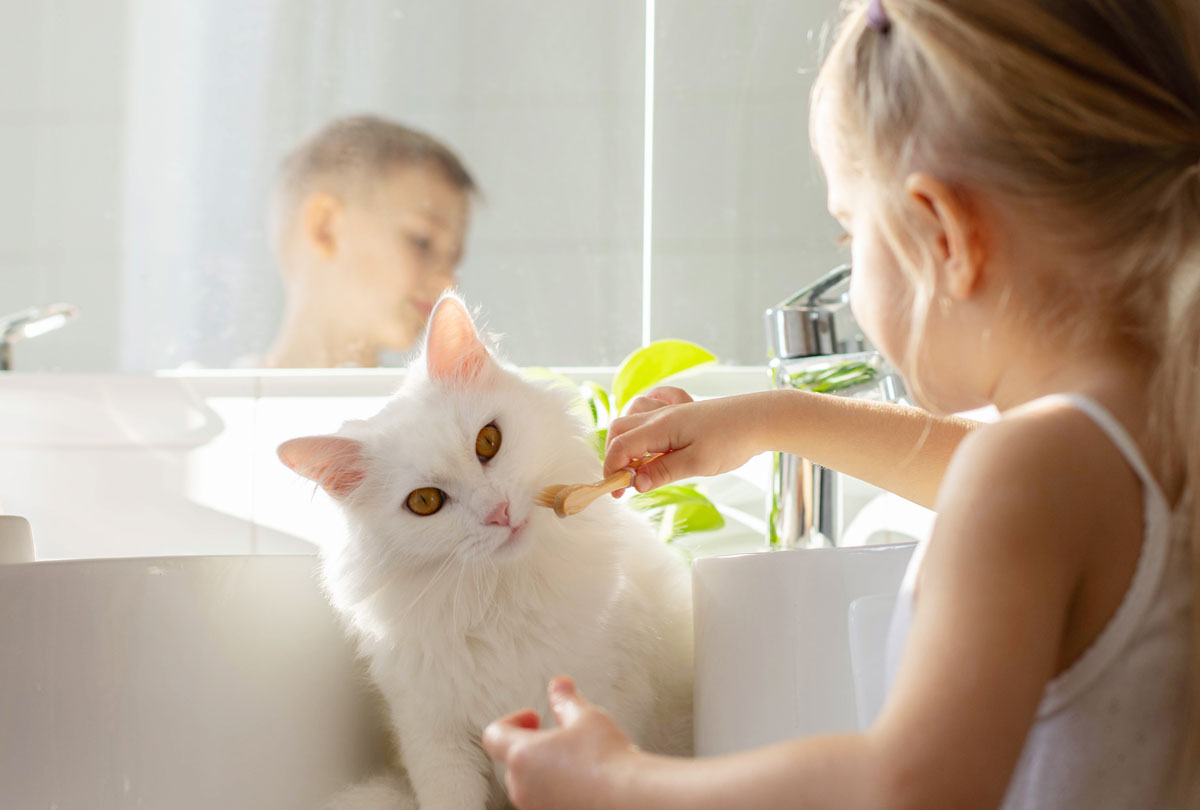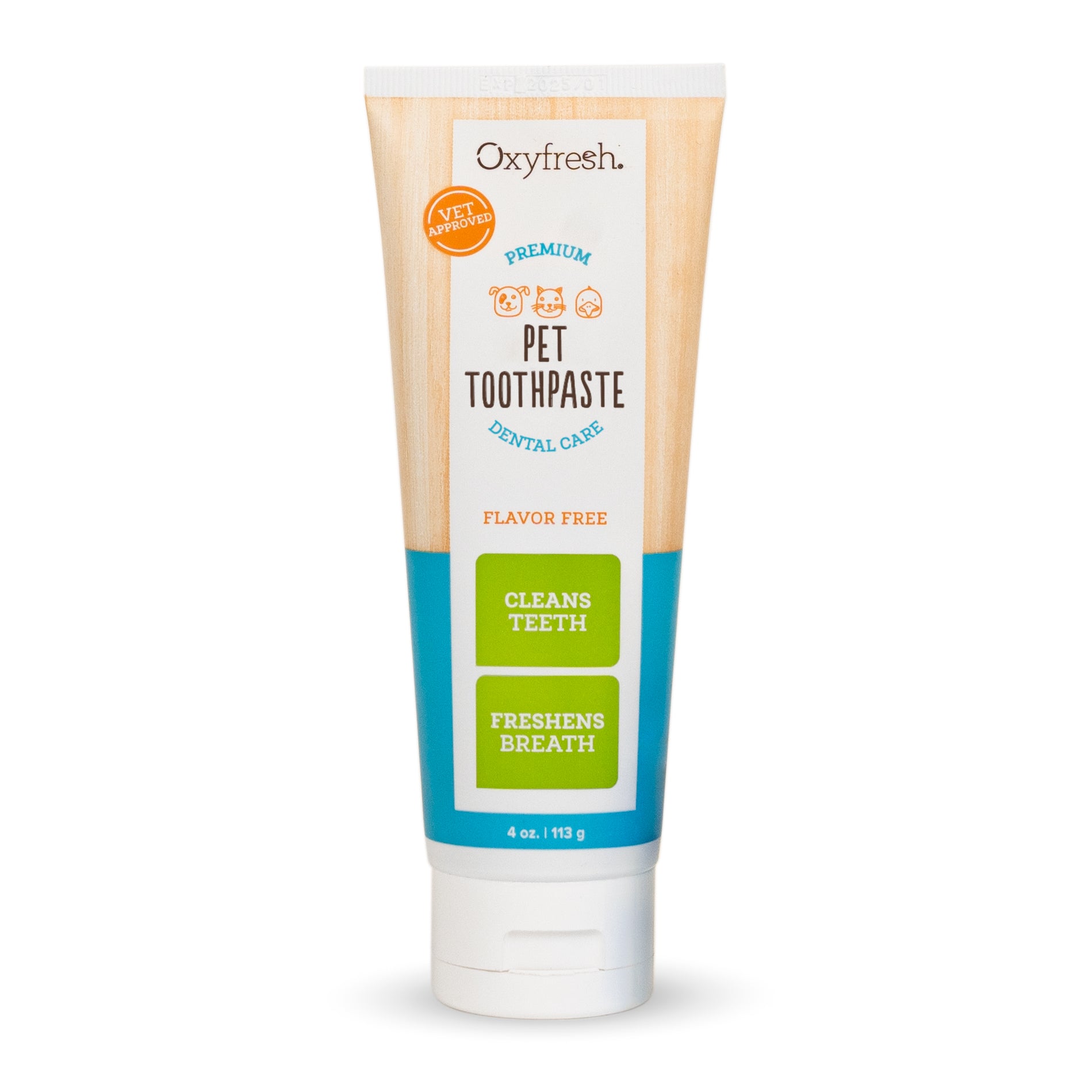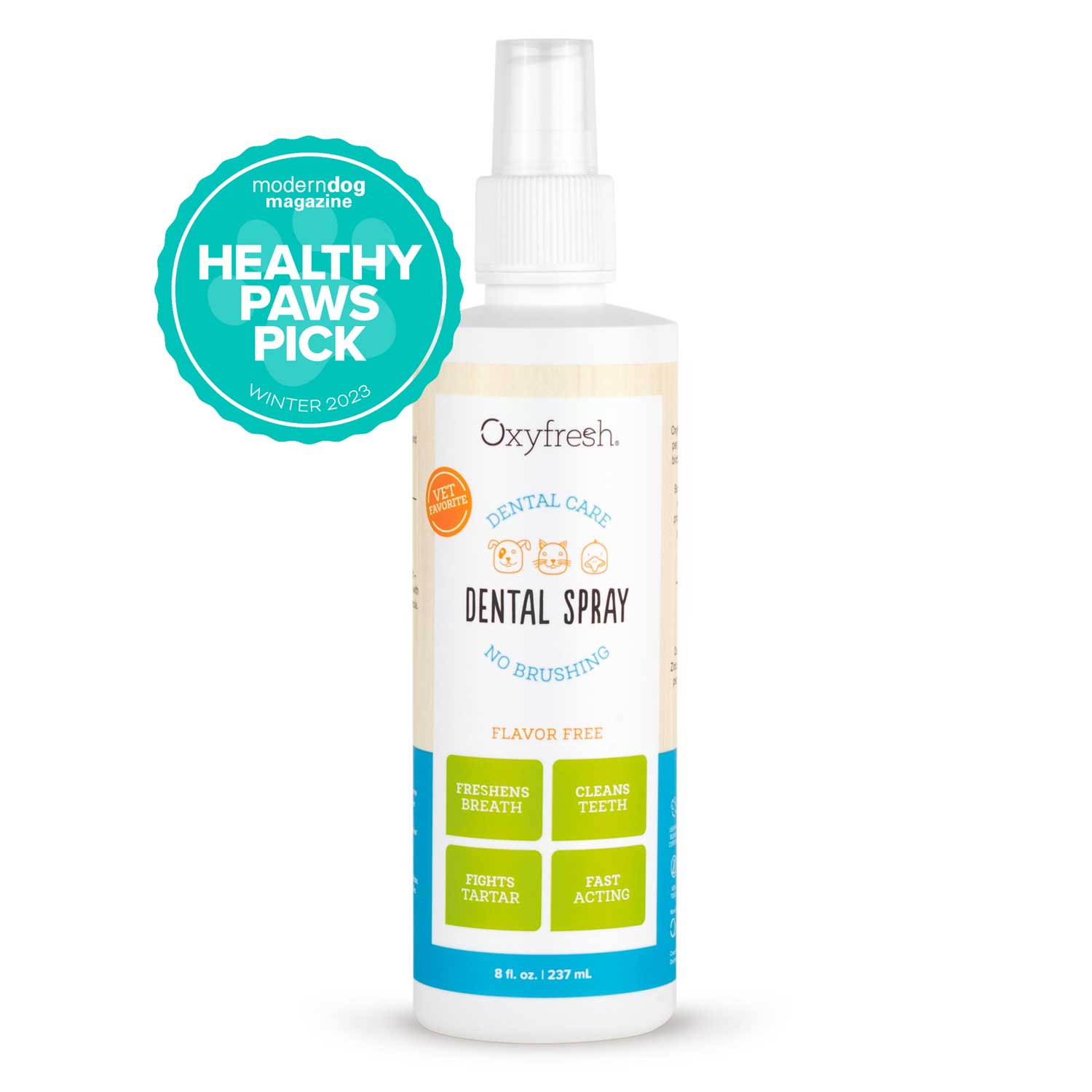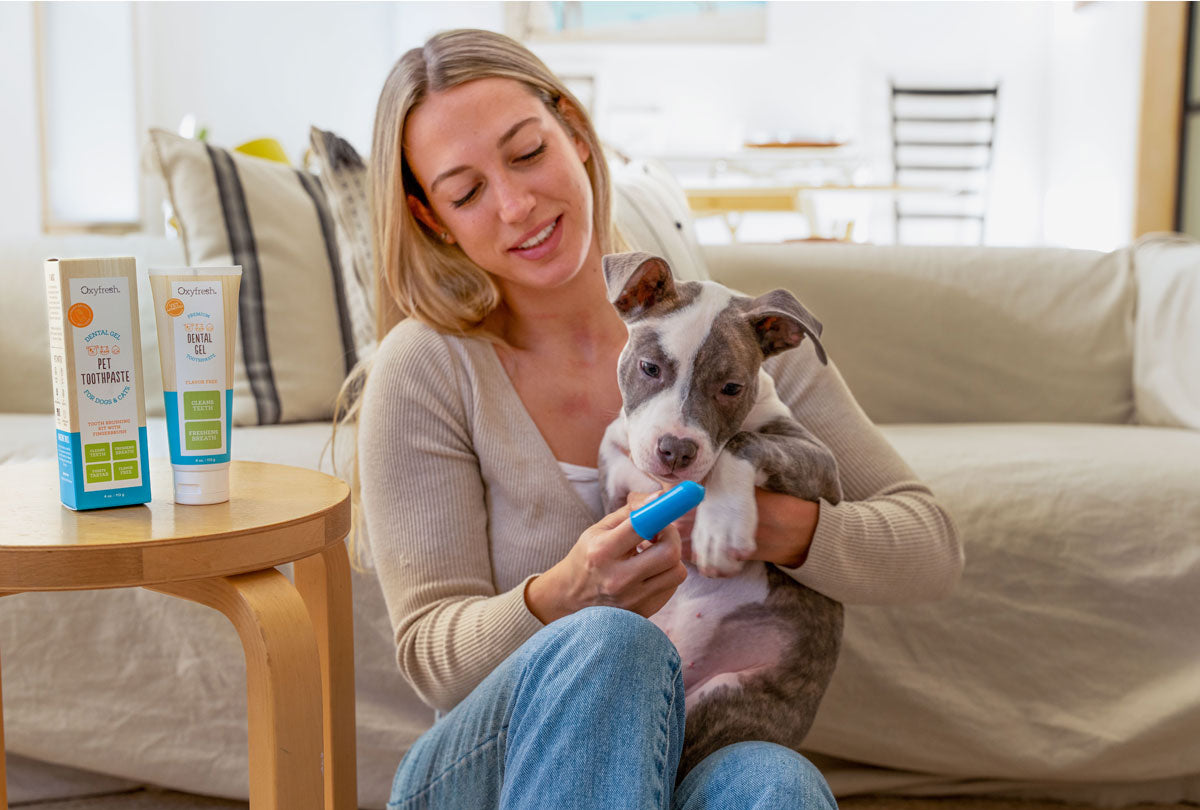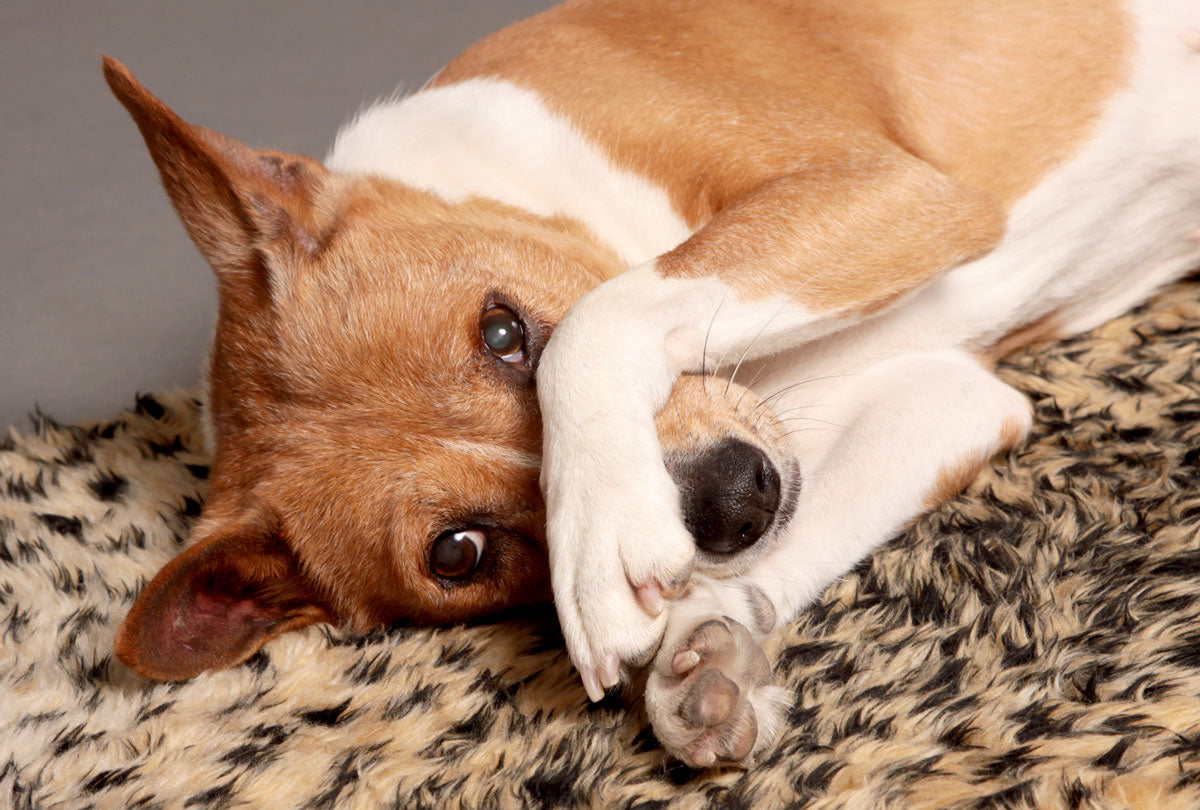Lick, lick, lick. Cats are pros when it comes to keeping their fur clean. If only we could say the same thing about their teeth! But since they’re not going to grow thumbs anytime soon, it’s up to us to know how to keep cat teeth clean ... and get rid of that fishy breath too!
Now, before you start breaking into a cold sweat at the thought of poking around in your cat’s mouth, relax. You’ve got options when it comes to your cat’s dental care.
Is Keeping Cat Teeth Clean Really That Important?
Absolutely. This often-ignored part of cat parenting is essential to their health and wellbeing. If pet parents don’t know how to keep cat teeth clean and free of plaque, gum disease is sure to set in.
This common health condition is evident in 80% of cats by age three, with bad cat breath usually being the first indicator of a problem. (Before you start to panic, know that gum disease is 100% reversible in the early stages and can be managed with vet intervention in the later stages.)
Gum disease is painful for cats because it inflames their gums. The bacteria in tartar can eat away at the structures of the teeth, causing them to separate from the gums. This can lead to tooth loss, difficulty eating, and one verrry unhappy cat.
Just like severe gum disease in humans is linked to heart disease, the same holds true for cats. That’s why poor oral health can decrease their lifespans, while conversely, good oral care could increase their lifespans by 1–3 years. That is a huge deal!
Do You Know If Your Cat's Teeth & Gums Are Healthy?
In addition to annual dental checkups at the vet, it’s important to keep an eye on things at home.
Healthy cat teeth should be clean, white and free of chips. Healthy cat gums should be bubble-gum pink with no redness, bleeding or swelling.
If you notice problems with your cat’s teeth or gums, bad breath that comes on suddenly, or your cat is drooling excessively, pawing at its face, or not wanting to eat, you’ll want to make an appointment with the vet right away.
How to Protect Cat's Teeth: Removing Plaque Is Paramount
Plaque is the starting point of gum disease. This sticky, clear substance forms on and in between a cat’s teeth after meals. Removing plaque promptly is key so that it doesn’t mineralize and harden into tartar, also known as calculus.
Tartar is yellow-brown in color and will first accumulate around the rear outer surfaces of the molars. Because tartar is so hard, it requires scaling tools to remove it, which means going in for a professional cat dental cleaning.
If you spot tartar buildup on your cat’s teeth, don’t ignore it. Tartar is packed with harmful bacteria and it’s how severe dental disease progresses.
The takeaway: The goal with an at-home cat dental care routine should be to remove plaque. Plaque is easy to remove, but trouble starts when it hardens into tartar.
Can't I Just Give Treats & "Dental Food" to Protect My Cat's Teeth?
We’re not trying to bag on those bags of treats or special-diet foods, as they may offer some benefits. For example, if they have fibrous ingredients or larger pieces that require chewing action, cats will get a bit of plaque-scraping action.
It’s similar to how healthy, fibrous foods work in our own mouths. Chewing on an apple or piece of celery will stimulate saliva flow (saliva neutralizes acids found in dental plaque) and will help clean our teeth as we chew them.
However, dentists would never suggest we throw out our toothbrushes and replace them with celery stalks. Or take bigger bites of fibrous crackers instead of coming in for dental cleanings.
We don’t mean to make light of the situation, but the truth is marketers often prey on consumers who are looking for the quick fix instead of putting in the time and understanding in how to keep cat teeth clean and healthy.
While there are some cat dental treats and cat foods that can help with removing a little bit of plaque, make sure to use them as a SUPPLEMENT to a cat teeth cleaning routine. You’ll also want to look for the VOHC (Veterinary Oral Health Council) seal on the product, as this seal shows the product meets VOHC standards for plaque and/or calculus reduction.
3 Easy Ways to Keep Cat Teeth Clean at Home
Because no two cat parents are alike, there are several options for how to keep cat teeth clean and healthy. What works best for your family will depend on your schedule, the amount of time you want to put into cat teeth cleaning, and, of course, what your cat will tolerate.
#1. Use a Cat Dental Spray or Dental Wipes
Although not as effective as brushing, which is the gold standard of cat dental care, cat dental sprays and wipes do help remove plaque from cats’ teeth. They still require you to touch your cat’s mouth, but they’re less invasive than tooth brushing and are super quick and easy.
It’s important to not overlook your cat’s gums when using dental sprays or wipes. You’ll especially want to pay attention to the area where the teeth meet the gum line.
Keep in mind that plaque wipes and sprays made with ingredients like baking soda, thyme oil and mint can be unpleasant to cats, so rolling with flavor free is your best bet.
Whether you use spray or wipes comes down to personal preference and the quality of the product. Some cats may not like the sound of a spray, while others don’t want anyone wiping stuff in their mouths. Cat dental sprays are more eco-friendly as well versus throwing wipes in the trash every day.
What We Recommend
Oxyfresh Pet Dental Spray is the purrfered (sorry) choice for cat dental sprays. Vet approved, it’s formulated with proprietary Oxygene® (stabilized chlorine dioxide), a non-toxic purifier proven to neutralize the bacteria that cause cat dental plaque and bad breath. Cats get even more protection for their teeth and gums with the addition of zinc gluconate, as it helps stop the odor and acid production of oral bacteria. This cat dental spray is tasteless, odorless and USA made. Cats love it!
#2. Use a Cat Dental Water Additive
A cat dental water additive is a completely hands-off way to keep cat teeth clean without brushing. All you do is add it into your cat’s water bowl or (non-charcoal) fountain daily. That’s it!
The key is to use a cat water additive that’s free of flavors and scents, because if you mess with the taste of their water, watch out! Not only will you get your cat’s death glare, but worse, they may refuse to drink their water.
If you’re worried about your cat’s sensitive stomach with using a water additive, just take it slow and start out halving the dose.
What We Recommend
Oxyfresh Pet Dental Water Additive is the #1 cat dental water additive with over 26,000 Amazon reviews. What makes it the leader of the pack is it’s made with proven ingredients for better cat oral health, like zinc and proprietary Oxygene®. Rather than cover up bad cat breath with questionable flavors like mint, green tea, and poultry, it works right at the microbial source to neutralize the bacteria that lead to plaque, bad breath and gum disease. It’s the answer for how to clean cat’s teeth without brushing and fussing (from you or the cat)!
#3. Brush Your Cat's Teeth
OK, ok, we promised this list would be easy, and while brushing may not be a walk in the park initially, if you keep at it, your cat may come to see tooth brushing as a special time to bond with you. If you don’t get the hang of brushing, don’t stress over it. Only 4% of people brush their cats’ teeth daily. The fact that you’re here reading about how to keep cat teeth clean and healthy speaks volumes.
If you choose to brush, we recommend using a fingerbrush versus a pet toothbrush with a handle. Toothbrushes with handles are often too bulky for cats’ small mouths. A fingerbrush, on the other hand (get it?), simply slips on over your finger so you can better maneuver it around your cat’s mouth and massage their teeth and gums.
To increase your odds of a successful brushing routine, get your cat used to having their mouth touched before you introduce brushing. You can dip your finger in tuna juice or broth and rub it around their gums. Seriously, the things we do for our cats!
What We Recommend
Oxyfresh Pet Dental Gel Toothpaste is formulated to deliver cleaner cat teeth, remove plaque, condition and deodorize their gums, and deliver the best cat fresh breath possible. Plus, it’s tasteless and odorless! You can order it solo or get it as a kit with a soft silicone fingerbrush.
Cat Dental Care Tips
- Be Consistent: If we only brushed our own teeth once a month, we wouldn’t get a "good report" at the dentist. Cats are no different. If you can’t do DAILY oral care, aim for at least three times a week.
- Be Positive: If you’re brushing your cat’s teeth or using a dental spray or wipe, calmly praise them throughout the process. Calm is the key word here. If they sense your anxiety, they will also become anxious.
- Treat: At least initially, give a treat after you brush or spritz your cat’s teeth, every time, even if it wasn’t a great experience. This will build a positive association with dental care in your cat’s mind.
- Time It Out: If you choose a hands-on method for how to keep your cat's teeth clean, do so when they are worn out and mellow, like after an exhausting game of laser tag.
- Start Early: It’s easier to get cats on board with home dental care if you start when they’re young. If you have an older cat who is stubborn, using a flavor-free cat dental water additive will be your best bet because they’ll be none the wiser about your genius plan (mwah ha ha).
Now that you know how to keep your cat’s teeth clean and healthy, it’s time to get going on it! And the payoff will be a happier cat, better dental reports, and best of all, fresh cat breath!

